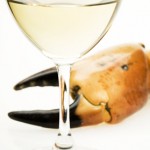Wine Club recipe matching competition winners announced!
Author: Guest Blogger
The waiting is over and our judges can reveal that the winners of our recipe matching competition are…
 …OK, so it may not be on par with the X-Factor final, but thank you to everyone who entered our competition to find a perfect wine match for their favourite recipes. Wine Club manager Katie Cooper and Berrys’ food and wine matching expert Nick Page have now selected their two favourite recipes and chosen the perfect wine to accompany each one. Congratulations to the winners, who will each receive six bottles of the recommended wines to help their dinner parties go with a swing. Here are Nick’s comments and recommendations, you can also click on the dishes to get full recipe details so you can create these tasty treats at home – maybe even make one for your X-Factor final party!
…OK, so it may not be on par with the X-Factor final, but thank you to everyone who entered our competition to find a perfect wine match for their favourite recipes. Wine Club manager Katie Cooper and Berrys’ food and wine matching expert Nick Page have now selected their two favourite recipes and chosen the perfect wine to accompany each one. Congratulations to the winners, who will each receive six bottles of the recommended wines to help their dinner parties go with a swing. Here are Nick’s comments and recommendations, you can also click on the dishes to get full recipe details so you can create these tasty treats at home – maybe even make one for your X-Factor final party!
Minty lamb curry from Neil Hedge
“There’s no spicy heat from curry powder or chilli with this dish, just lots of aromatic herbs –and spices like cardamom, fennel, and ground coriander are all key elements (ground coriander is very different to coriander leaves), plus the tomatoes add some acidity giving this dish a Moroccan/Lebanese feel. The mint adds a fresh aroma and a Cabernet Sauvignon blend (Cabernet and mint work brilliantly) with some Southern French varieties to match the warmth of the spices would be perfect.”
Recommendation: 2005 Massaya Siler Red, Bekaa Valley, Lebanon (£15.45). This blend of four varieties (Grenache, Cinsualt, Cabernet and Mourvèdre) has lovely ripe fruit but with a savoury backdrop; ideal with this complex, aromatic dish.
Char sui pork from Anna Siraut
“Sweetness and pork work really well together and that makes it a difficult food to match with wine. Ageing in new oak gives wine a vanilla aroma and the flavour of vanilla fools the brain into thinking it’s sweet. So a white wine that sees new oak is a must, but Chardonnay doesn’t really work, it is average at best with pork and white Bordeaux is too grassy. Viognier works well with Chinese flavourings but on it’s own it is too rich and fat, so a Viognier blend with some freshness and interest would work.”
Recommendation: 2008 Mullineux White, Swartland, South Africa (£13.95). This blend of Chenin Blanc, Clairette and Viognier attracts great reviews wherever it goes and is a stunning wine which will complement this tricky-to-match dish very well.
Members of Berrys’ Wine Club have access to a free, personalised recipe matching service, where Nick will send you perfect matches to any recipe you need!



I completely missed this! Didn’t miss the X-Factor final though. Minty Lamb Curry and the wine from the Lebanon, now that is something to try out for sure.
Great service you offer BTW for the Wine Club members, that is certainly something I’d taken advantage of.
Thank you for the Mullineux. I love the fact that it is so fresh. I think it’s this aspect that makes it work with the pork and makes everything on our christmas eve chinese feast even more “delish”. We’re moving on to King’s Ginger soon so cheers!
A lot of people say you should store wine bottles upside down! Is that true? and why?
What do you think about this wine holder for wine storing?
Dear Yasmin,
Wine is best stored on its side – this keeps the cork moist and prevents it from failing. One can store wines upside down – this will do the same job, but any sediment thrown will form in the neck of the bottle, which is less than ideal.
Best,
Joss
I understand storing the wine on it’s side when corked but so many good bottles noww use screw caps! Does that make any difference for storage?
Hi Sammie,
The reason cork-stoppered bottles are stored lying down is to stop the cork drying out. Bottles closed with stelvin capsules by contrast, have so far been proven to keep and improve if stored vertically, or even upside down, with no detrimental effect to wine quality. The length of time that the wine should be stored will, however, relate to the quality of screwcap used by the producer. Some screwcap manufacturers guarantee their screwcaps for up to 10 years – which compares to an average of three years for synthetic closures.
As regards the length of cellaring of a screwcapped wine (where the closure is changed at least every ten years or so, that is), it is difficult to say for certain as they are a relatively new phenomenum in the wine world. The oldest samples go back 30 years, and have shown to keep very well as they appear to retain more fruit than their counterparts bottled under cork. However, the evidence just doesn’t exist yet of how these wines will age in the long term.
I hope this helps,
Emily